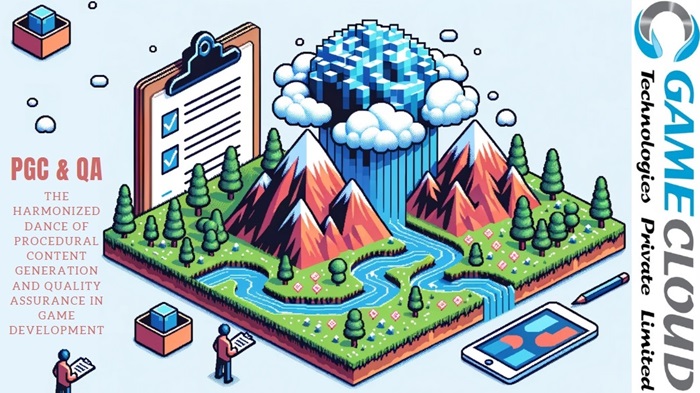
The video game industry has always been at the forefront of technological innovation. Among these advancements, Procedural Content Generation (PCG) and Artificial Intelligence (AI) have taken center stage, redefining the paradigms of game creation. PCG, empowered by AI, paints an endless canvas of experiences, crafting diverse game landscapes and scenarios. However, this technological marvel brings forth the quintessential challenge of ensuring game quality, where traditional Quality Assurance (QA) methods meet their match. This article delves into the symbiotic relationship between PCG, AI, and QA, exploring the seamless interplay necessary to deliver a polished gaming experience.
Advantages of AI-Driven PCG:
1. Scalability and Variety: AI-driven PCG exponentially scales game worlds, offering a more expansive and immersive player experience. This scalability fosters a rich variety of content, enhancing the game’s appeal and quality.
2. Resource Optimization: By automating repetitive tasks, AI-driven PCG allows human developers to channel their creativity into crucial aspects like storyline development and character design.
3. Replayability: The endless scenarios generated by PCG enhance the replay value of games, bolstering their perceived quality and longevity in the competitive market.
Drawbacks of AI-Driven PCG:
1. Loss of Artistic Control: The automation inherent in PCG can dilute fine-grained artistic control, potentially leading to inconsistencies in visual style, game mechanics, or narrative coherence.
2. Quality Assurance Challenges: The unpredictable nature of AI-generated content poses a significant challenge for QA teams. Traditional QA methods falter in the face of PCG’s sheer magnitude, risking the launch of a game riddled with bugs or gameplay issues.
3. Unforeseen Ethical Implications: AI algorithms may inadvertently generate culturally insensitive or offensive content, posing ethical dilemmas and potentially tarnishing the game’s reputation and perceived quality.
The QA-PCG Dance:
The unpredictable nature of PCG is a double-edged sword. While it can spawn incredible, diverse content, it can also produce bugs, glitches, and inconsistencies. Here, QA steps in as the indispensable safety net, catching these errors before they shatter the player’s immersion. Professional QA testing, coupled with automation tools, emerges as the ingenious solution to navigate the vast landscapes of procedurally generated content. This combination of human effort and technological prowess sends an army of digital explorers into the game, relentlessly testing every nook and cranny for potential issues, ensuring each mesmerizing pixel falls perfectly into place.
Conclusion:
AI-driven Procedural Content Generation has reshaped the game development landscape, promising a future of endless possibilities. However, the integral role of Quality Assurance in this equation cannot be understated. It’s an intricate dance, a symbiosis that not only enhances the game’s quality but also ensures a seamless player experience. As we marvel at breathtaking, procedurally generated sunsets in our favorite games, let’s celebrate the unsung heroes – the QA testers – who ensure that the magic of PCG translates into a flawless gaming experience. The harmonization of PCG, AI, and QA is crucial for leveraging the advantages of technological advancements while maintaining the high-quality standards that define successful games in today’s market.
